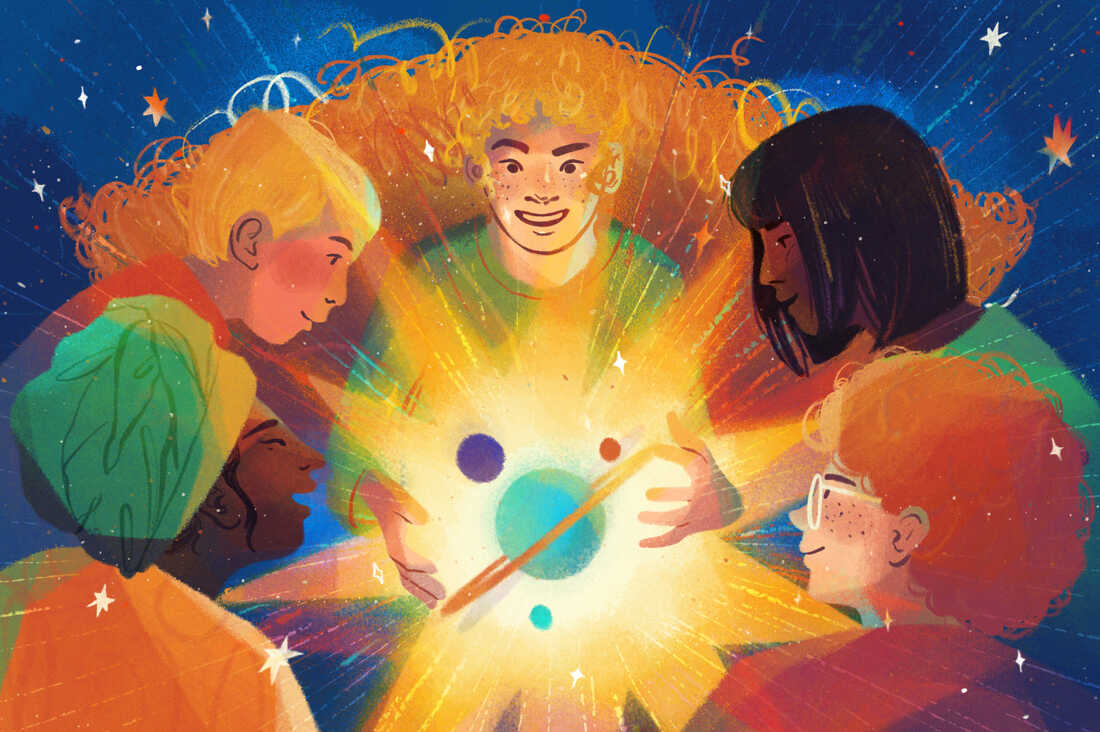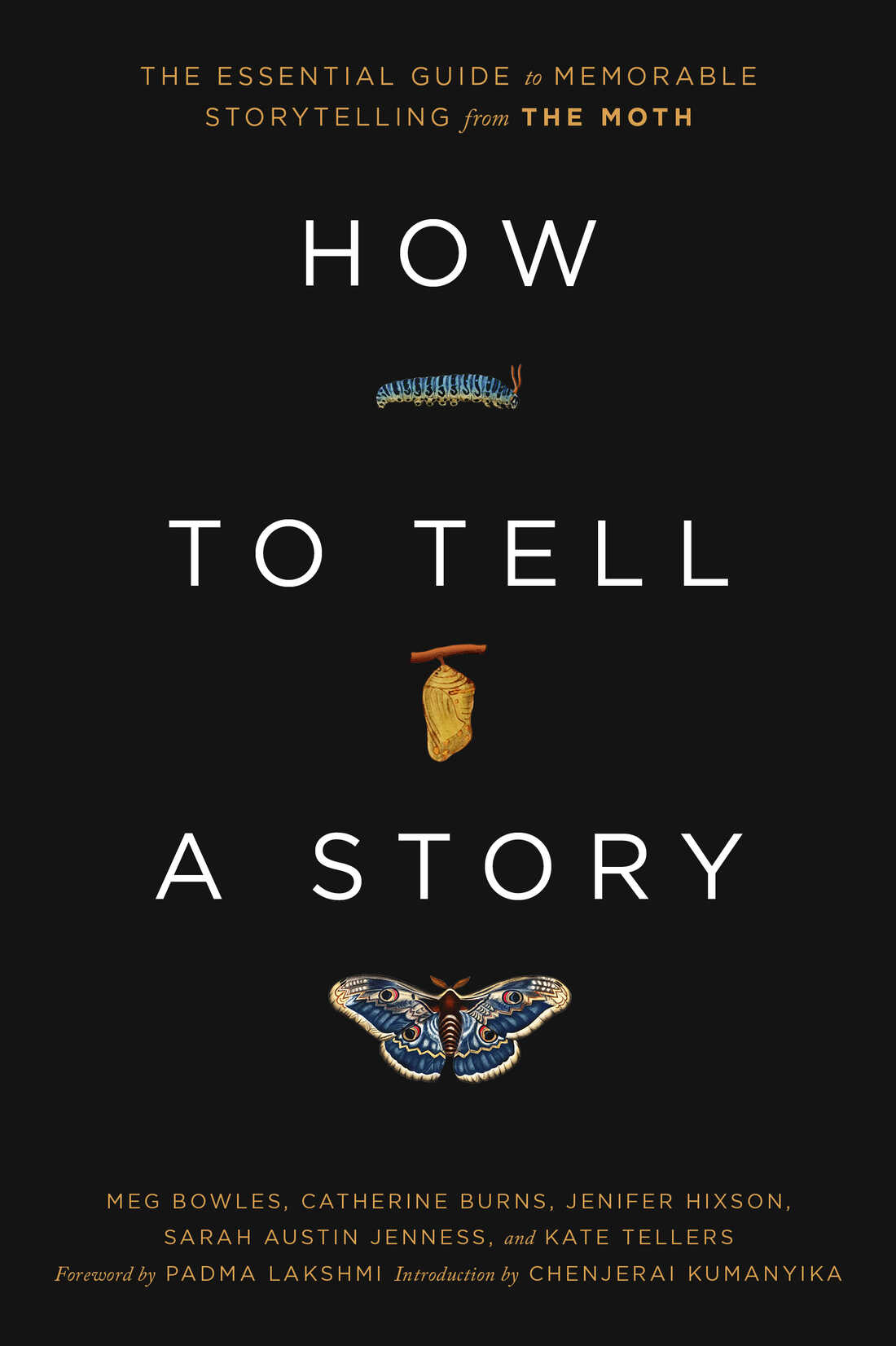
Our lives are filled with storytelling, from the stories we tell our friends over dinner, to the ones we tell at eulogies, during toasts, at job interviews and on dates.
“[Stories] make us laugh and they make us feel hope, and they make us feel like it’s going to be OK, [like] we’re less alone,” says Sarah Austin Jenness, the executive producer of The Moth, an organization and podcast dedicated to teaching and promoting the craft of storytelling. Jenness is one of the co-authors of How to Tell a Story: the Essential Guide to Memorable Storytelling from The Moth.

Stories help us relate to each other and build community, say Jenness and her co-author and fellow storytelling coach, Meg Bowles. Leveling up our storytelling game can lead to more meaningful connections.
Here’s their step-by-step guide on how to tell a story, from an idea to delivery:
1. Understand that a story is more than a scene or an anecdote.
Does the story you want to tell have a beginning, a middle and an end? Does it have tension? Does it show some sort of transformation? These are the basic elements that make an anecdote blossom into a full-bodied story.
When you’re telling a story, you aren’t just describing what happened when you walked into the coffee shop and saw your ex on a date. You’re telling us how that moment felt emotionally, how you were affected, how you reacted and how you’re a different person after having endured that moment.
2. Select a meaningful story.
Each of us has hundreds of stories we could tell. How do we know which one to pursue? “I always say to think back to moments in your life that really shifted you in some way,” Bowles says. “Dig in to that.”
When you think of a moment, ask yourself, “Why did that moment stick with me? What about that moment was important to me?”
“You start to see patterns of your story arise,” says Bowles.
Big decisions are a good place to find stories; so are embarrassing moments and mistakes. Think of a time you did something but it didn’t go as planned. Within these kinds of prompts you can begin to explore moments of vulnerability.
If you’re not sure how or where to start mining for your own stories, here are some helpful prompts:
- If your life were a movie, what’s one scene you’ll never forget?
- What’s something someone said to you that you’ll never forget?
- Tell us about a breakthrough moment.
- Tell us about a time you had to follow your heart.
- Tell us about a moment you were reunited with something you treasure.
3. Develop your story.
Once you find the story you want to tell, put it under a magnifying glass to blow it up big. Where were you (physically, mentally, emotionally) in that moment? How did it impact your life? What were the results?
Boil your story down to one sentence that helps focus what it’s really about. For example, “It took a disaster for me to understand the important role my father played in our community.” This will help you decide which details support your main point.
Remember that in any great story you’re not just sharing events that happened, you’re also sharing the thoughts and feelings running through you during those events.
4. Figure out the structure.
A good rule of thumb is to start in the action of the story – this will draw people in. From there, ask yourself if you’ll tell your story in chronological order, or if you’ll start at the end and find your way back to the beginning, or if you want tell it in a series of flashbacks instead of a linear structure.
Don’t worry about getting too fancy with the structure – often, telling a story chronologically is the best way to go. “You want to take people through the journey so they can experience what you experienced, ” Bowles says.
5. Understand how you’ve changed by the end.
By this point, you know the moment your story is centered on, what the stakes or tensions are and how you want to tell the story. Writing the ending can be the hardest part.
“Stories in real life usually aren’t tied up with a bow,” Jenness says. “You just have to end the story in a different place than [where] you began.”
The key to a good ending is showing the audience your transformation over the course of the story, even if it’s a slight transformation. “There’s the ‘you’ we met in the beginning and the ‘you’ at the end,” she explains.
6. Ask yourself if you’re ready to share the story.
If you’re considering telling a story rooted in vulnerability or trauma, it’s important to consider whether you’re emotionally ready to share that story.
Here are some signs you might not be ready to tell a story publicly:
- if you get stuck on one scene and aren’t able to come out of it because you’re reliving it – this can happen with traumatic events and could be a sign of post-traumatic stress disorder.
- if it’s tough to find an ending to a story, it may mean that you’re still living it. You might need to “press pause” and return to the story when you’ve had more time to process.
7. Before you deliver the story, practice, practice and practice again – but don’t memorize it.
It’s natural to feel nerves before sharing a story aloud. Become very familiar with your story. Practice enough to be comfortable telling it from memory, but the Moth team recommends that you don’t memorize it word for word. If you memorize it verbatim, your delivery can sound stiff and you might go blank.
“Stories are alive and they’re meant to sound alive,” Bowles says.
A good strategy is to really learn the words you want to use for the beginning and end of your story, but keep your notes in between as bullet points. That way you can naturally fill the gaps, but you have your most important elements well-rehearsed.
“If you go blank on stage, just think, ‘What happened next?'” Jenness says. “If you realize you didn’t set it up right, you can always say ‘Now, what I forgot to tell you about my mom is…’ or ‘What you really need to know…'”
8. Remember that storytelling is not about the storyteller – it’s about connection.
Keep it short and tight. If you’re telling a story in a more interactive environment, like over dinner, remember that the purpose of storytelling is to engage with others. It’s not about taking the spotlight for the entire time you’re with someone. You want to offer a jumping-off point for someone else to share their own story, too.
To view this article in its original format, click here.



